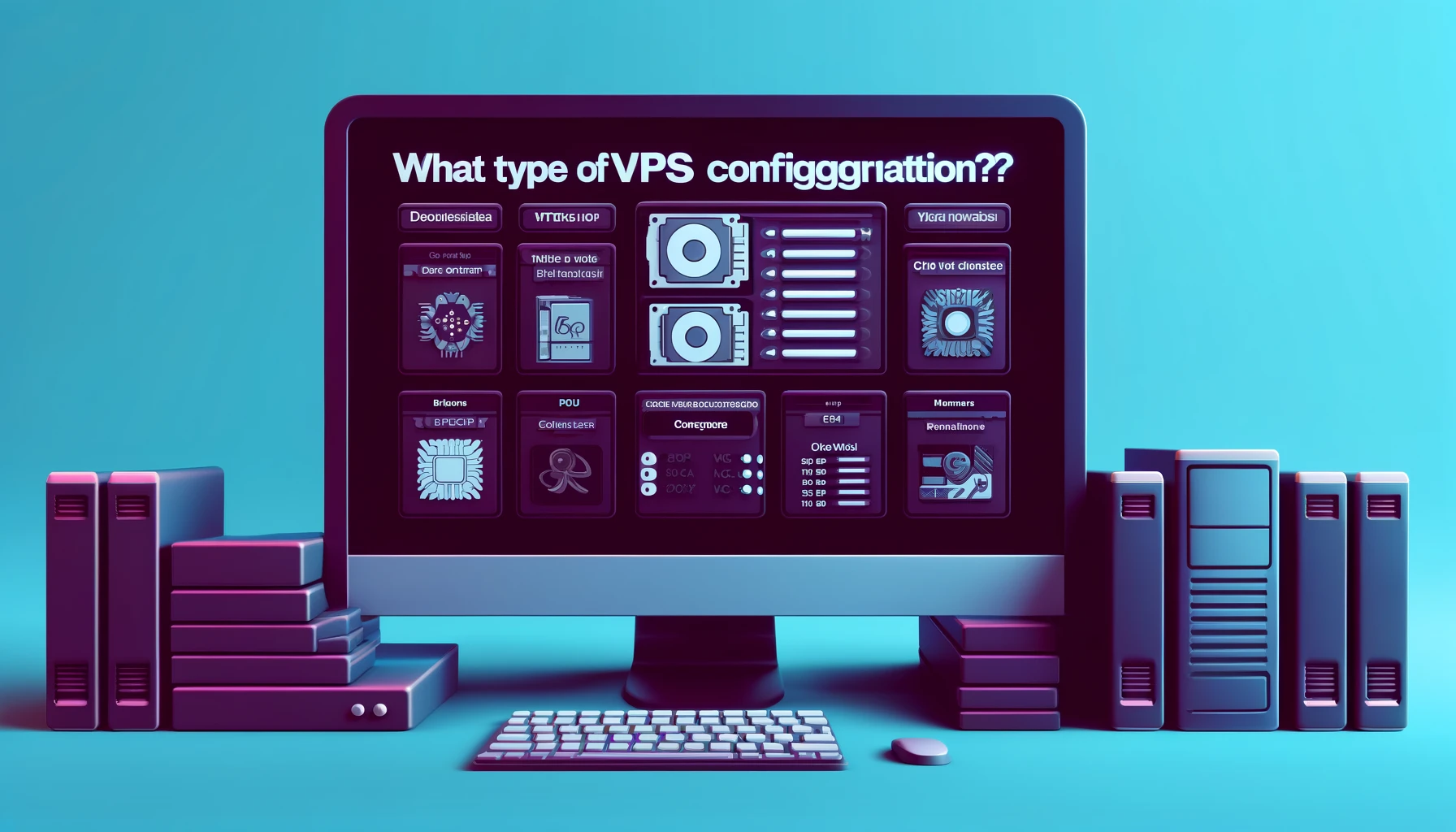FAQ
4. Choose the Right VPS Configuration

When choosing a Virtual Private Server (VPS) configuration, considering the diversity of requirements and the complexity of technical specifications is crucial. Clearly understanding your own needs and the impact of various configuration options is vital. The following steps and tips will help you select the VPS configuration that best suits your business and personal needs.
The first step in choosing a VPS configuration is to clearly understand your business requirements. You need to ask yourself the following questions:
It is very important to choose the CPU and RAM based on your application type and expected load. If your application is CPU-intensive (such as video encoding, large-scale computation), choosing a multi-core processor is necessary. For most small to medium businesses, choosing a dual-core or quad-core processor is sufficient.
Memory is also crucial for ensuring rapid data processing and multitasking. Generally, starting from 2GB and scaling up based on application needs is advisable.
VPS storage options typically range between HDDs and SSDs. SSDs are much faster and more durable than traditional hard drives, suitable for applications that require high-speed read/write operations. If the budget allows, it is recommended to choose SSDs, especially when your application needs frequent database read/writes or file operations. For situations requiring large data storage but not high speed, HDDs can be considered.
Bandwidth is a crucial factor affecting website loading speeds and the ability to handle a high volume of user requests.
For websites or applications with high traffic, choosing a VPS configuration with high bandwidth and unlimited traffic is necessary.
Ensure the provider's bandwidth can meet your peak requirements, so user experience is not affected by insufficient bandwidth.
Security and the reliability of the service are also crucial factors in choosing a VPS. Understand the provider's security measures, including data encryption, firewalls, DDoS protection, and regular security audits. Additionally, choosing a VPS provider that offers high availability and data backup solutions can further enhance data security.
Choosing the appropriate VPS configuration requires careful evaluation and comparison based on your specific needs. Considering performance, cost-effectiveness, and scalability, a reasonable configuration choice can provide strong support for your business, ensuring that the technological infrastructure can keep up with business growth and expansion needs. Spending time to research and choose the VPS that best meets your needs will help your business in the long-term development.
Assess Your Needs
The first step in choosing a VPS configuration is to clearly understand your business requirements. You need to ask yourself the following questions:
- Traffic Volume: How much traffic do you expect your website or application to receive each month?
- Application Type: What type of application are you running? Is it a static website, dynamic site, database-driven application, or a resource-intensive application?
- Resource Usage: Does your application require a lot of CPU processing power or memory?
- Storage Needs: How much disk storage space do you need? Do you need faster SSD storage to improve performance?
- Security Requirements: What standards do you need to meet for data security and privacy protection?
Choose Processor and Memory
It is very important to choose the CPU and RAM based on your application type and expected load. If your application is CPU-intensive (such as video encoding, large-scale computation), choosing a multi-core processor is necessary. For most small to medium businesses, choosing a dual-core or quad-core processor is sufficient.Memory is also crucial for ensuring rapid data processing and multitasking. Generally, starting from 2GB and scaling up based on application needs is advisable.
Consider Storage Options
VPS storage options typically range between HDDs and SSDs. SSDs are much faster and more durable than traditional hard drives, suitable for applications that require high-speed read/write operations. If the budget allows, it is recommended to choose SSDs, especially when your application needs frequent database read/writes or file operations. For situations requiring large data storage but not high speed, HDDs can be considered.
Consider Network Bandwidth &Traffic
Bandwidth is a crucial factor affecting website loading speeds and the ability to handle a high volume of user requests.For websites or applications with high traffic, choosing a VPS configuration with high bandwidth and unlimited traffic is necessary.
Ensure the provider's bandwidth can meet your peak requirements, so user experience is not affected by insufficient bandwidth.
Security & Reliability
Security and the reliability of the service are also crucial factors in choosing a VPS. Understand the provider's security measures, including data encryption, firewalls, DDoS protection, and regular security audits. Additionally, choosing a VPS provider that offers high availability and data backup solutions can further enhance data security.
Conclusion
Choosing the appropriate VPS configuration requires careful evaluation and comparison based on your specific needs. Considering performance, cost-effectiveness, and scalability, a reasonable configuration choice can provide strong support for your business, ensuring that the technological infrastructure can keep up with business growth and expansion needs. Spending time to research and choose the VPS that best meets your needs will help your business in the long-term development.FAQ Classification
Related FAQ
- 1. What is a VPS?
- 2. How is a VPS different from a dedicated server?
- 3. What to think about when choosing a VPS
- 5. Should I use Linux or Windows for my VPS?
- 6. Setting & Managing
- 7. How can I install apps or software on my VPS?
- 8. How to monitor VPS performance?
- 9. Security & privacy
- 10. What security configurations and tools do I need?
- 11. VPS Performance & Optimization
